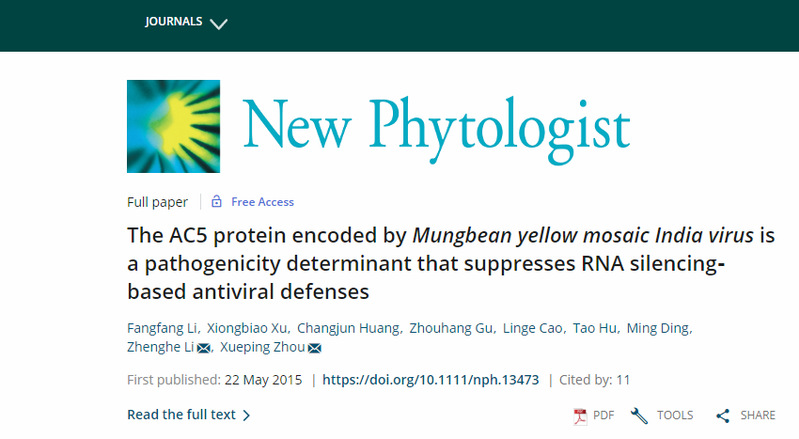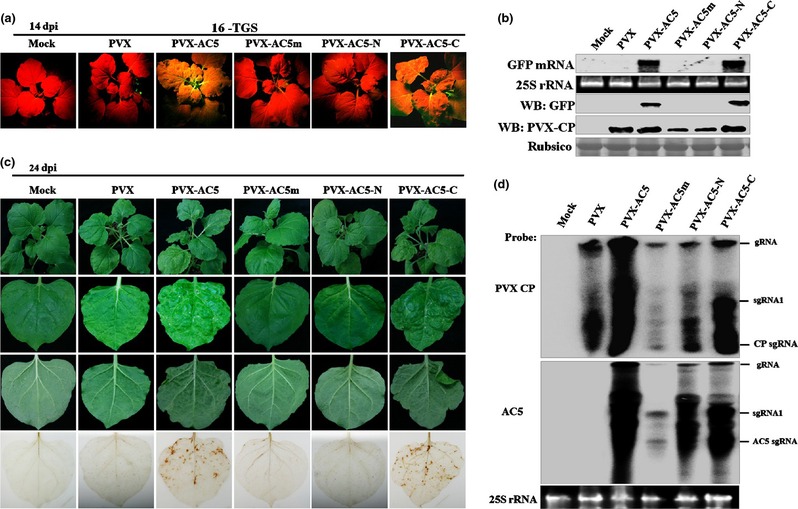RESEARCH
Current location:homepage RESEARCH PUBLICATIONS
New Phytologist: The AC5 protein encoded by Mungbean yellow mosaic India virus is a pathogenicity determinant that suppresses RNA silencing‐based antiviral defenses
DATE:2018-07-12
The AC5 protein encoded by Mungbean yellow mosaic India virus is a pathogenicity determinant that suppresses RNA silencing‐based antiviral defenses
Fangfang Li Xiongbiao Xu Changjun Huang Zhouhang Gu Linge Cao Tao Hu Ming Ding Zhenghe Li Xueping Zhou
Summary
It is generally accepted that begomoviruses in the family Geminiviridae encode four proteins (from AC1/C1 to AC4/C4) using the complementary‐sense DNA as template. Although AC5/C5 coding sequences are increasingly annotated in databases for many begomoviruses, the evolutionary relationships and functions of this putative protein in viral infection are obscure.
Here, we demonstrate several important functions of the AC5 protein of a bipartite begomovirus, Mungbean yellow mosaic India virus (MYMIV). Mutational analyses and transgenic expression showed that AC5 plays a critical role in MYMIV infection. Ectopic expression of AC5 from a Potato virus X (PVX) vector resulted in severe mosaic symptoms followed by a hypersensitive‐like response in Nicotiana benthamiana.
Furthermore, MYMIV AC5 effectively suppressed post‐transcriptional gene silencing induced by single‐stranded but not double‐stranded RNA. AC5 was also able to reverse transcriptional gene silencing of a green fluorescent protein transgene by reducing methylation of promoter sequences, probably through repressing expression of a CHH cytosine methyltransferase (DOMAINS REARRANGED METHYLTRANSFERASE2) in N. benthamiana.
Our results demonstrate that MYMIV AC5 is a pathogenicity determinant and a potent RNA silencing suppressor that employs novel mechanisms to suppress antiviral defenses, and suggest that the AC5 function may be conserved among many begomoviruses.


